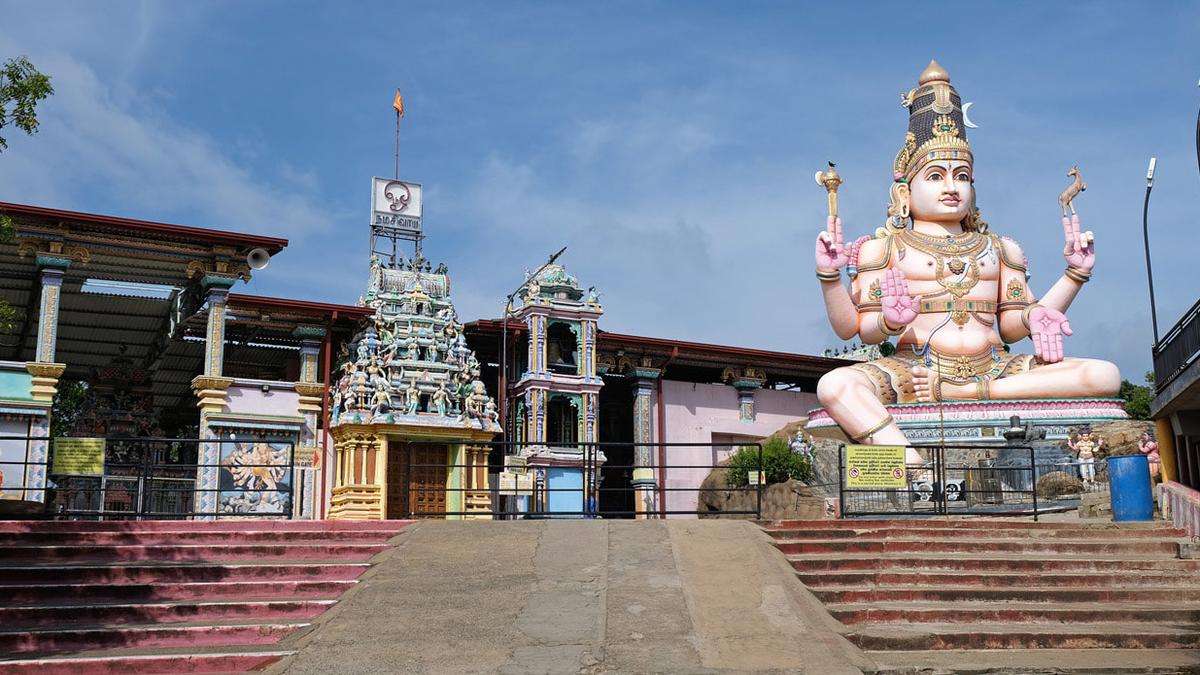The Ramayana’slinks with Sri Lanka are well-known across India. Not so celebrated is the connection that Tevaram (a collection of devotional hymns to Shiva) has with that country. Of the 275 Padal Petra Sthalams revered in the Tevaram, the collective name for the works of the trio — Appar, Sambandar and Sundarar — two are in Sri Lanka. A visit to these places, with those verses at hand, makes for a delightful experience of devotion and history.
Given that Sri Lanka was and is a Buddhist stronghold, it is not surprising that Hindu shrines came up along the periphery, practically hugging the coast. Five temples dedicated to Shiva are particularly sacred, and these Pancha Iswarams, as they are referred to, seem to form a protective chain around the island. Beginning from the north and proceeding clockwise, we have Naguleswaram in Jaffna, Koneswaram at Trincomalee in the northeast, Tondeswaram in the south, Munneswaram on the west and Ketheeswaram in Mannar in the northwest. Of these, the second and fifth are Padal Petra Sthalams.
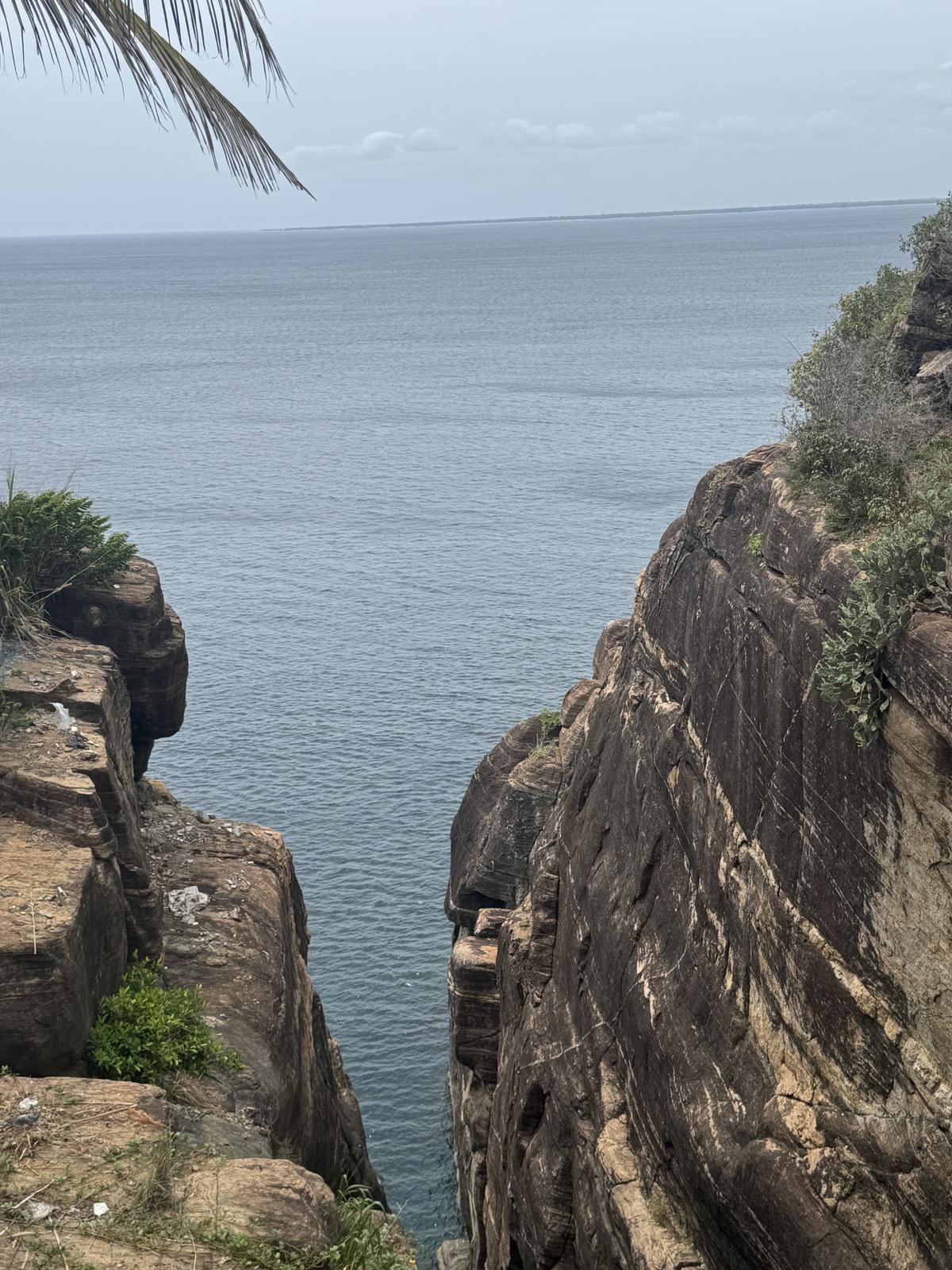
The rock at Koneswaram
| Photo Credit:
Special Arrangement
Both temples have a shared history by way of mythical origins, Tevaram hymns, expansion by the Cholas and subsequent kings of Sri Lanka, destruction by the Portuguese in the 17th Century and finally, reconstruction under the leadership of the Saiva Agama scholar Arumuga Navalar in the 19th Century. Recent history too has not been kind to the temples, affected, as they were, by the civil war. They now seem to be enjoying a resurgence, as reflected in the reconstruction and worship by large throngs of disciplined devotees.
Koneswaram is the more picturesque, located as it is, on a dramatic outcrop facing the sea. Once known as Dakshina Kailasam and famed for its now vanished thousand-pillared hall, it has links to the multiple Gokarnas of India where Shiva was worshipped by a cow carrying water for his anointment in its ear. Sambandar in his Tevaram hymns, of which one verse is missing, has it that the sea deposits fragrant wood, gold, shells and precious stones on the shores of this Konamalai, and describes the mighty waves of the ocean and the moisture-laden air. Most significantly, he mentions a sunai or natural spring. The Papanasam spring here is of great sanctity.
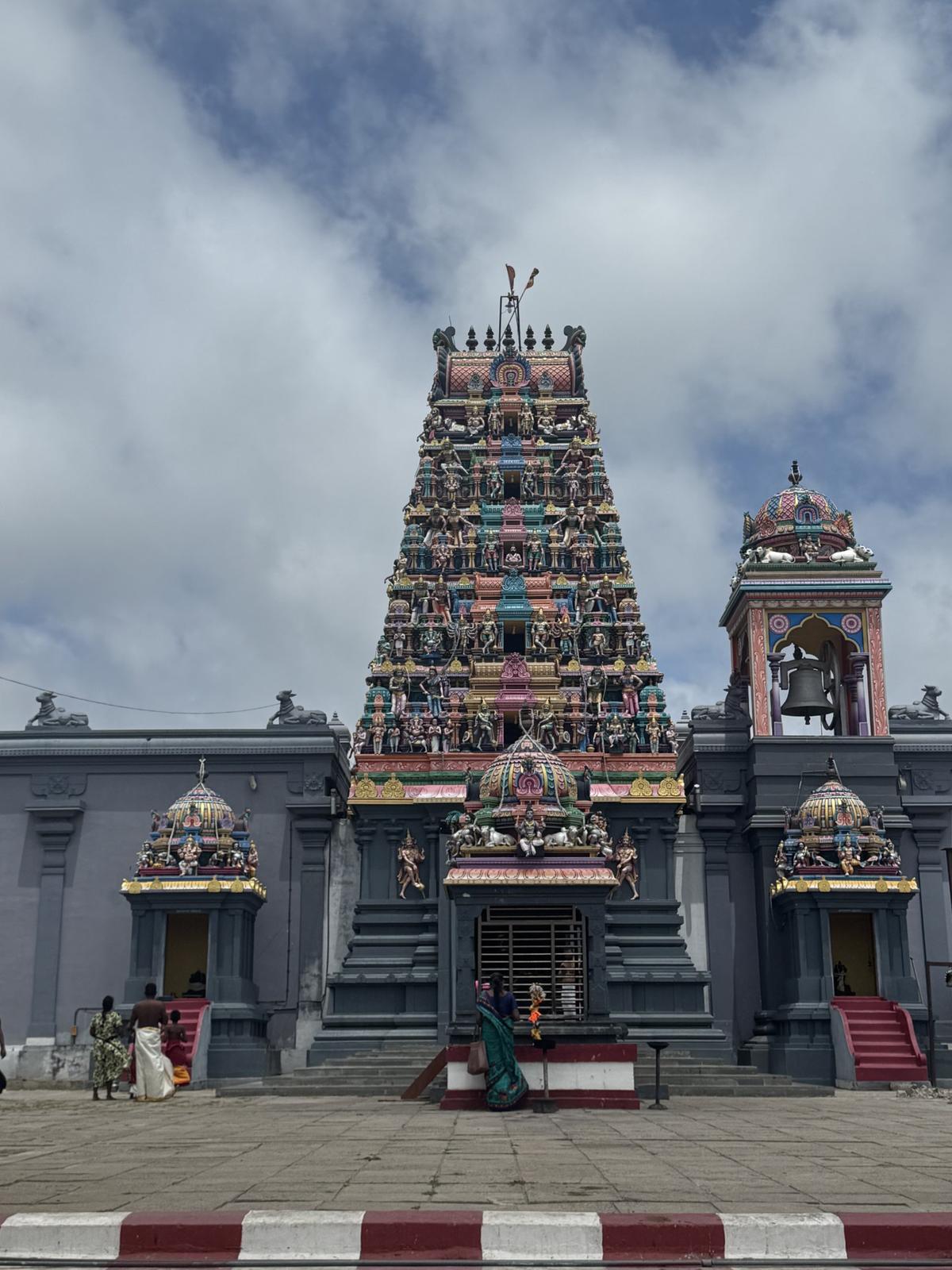
Ketheeswaram temple in Mannar is one of the Padal Petra Sthalams
| Photo Credit:
Special Arrangement
Sri Lanka is called the Emerald Isle and the greenery is the first aspect that strikes you when you are there. Sambandar too seems to have noticed this for, at Koneswaram, he says, the Lord delights in the groves of malli, madhavi, vengai, punnai, serunti, champakam and mullai. Standing at a dramatic cliff from where water falls into the sea, you feel thrilled that you are where Sambandar was. You see the same waves crashing the rock and inhale the air that has the fragrance of the sea, as he described.
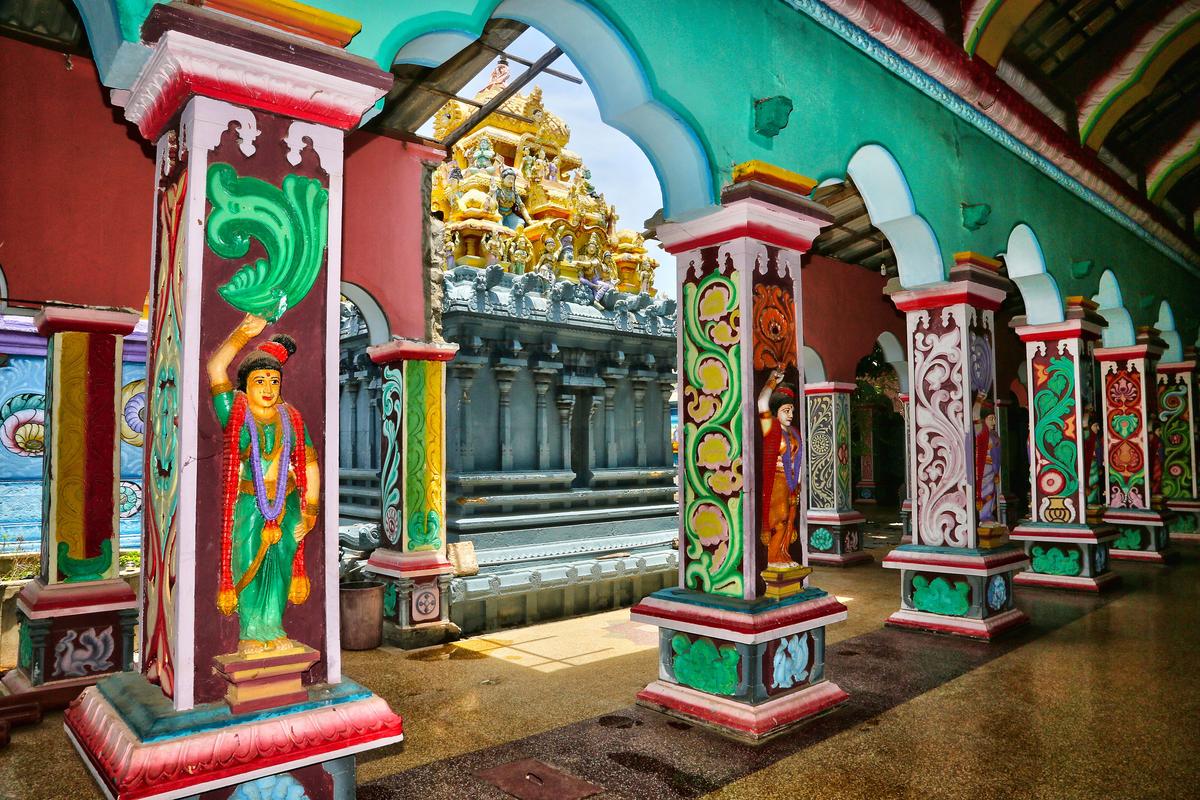
Naguleswaram temple in Keerimalai
| Photo Credit:
Getty Images
That Kathirkamam in Sri Lanka received Tiruppugazh verses from Arunagirinathar is well known. He seems to have visited Koneswaram too. The set, beginning with Vilaikku Meni, is dedicated to Muruga in the six-tiered gopuram at Tirukkonamalai. There are no other details but it is possible that such a tower once stood here.
Though entirely reconstructed in recent times, Koneswaram has one link to its ancient past. The Somaskanda icon, belonging to the Chola period, was discovered embedded in the sea and rescued. It is now being worshipped. Much of the underwater discoveries were possible, thanks to the sci-fi writer Sir Arthur C. Clarke, who was an avid deep-sea diver.
Sambandar’s visit to Konamalai
Sambandar must have come by sea from the mainland to Konamalai. Another busy port was Mahathitta on the northwestern coast, at Mannar. It was where the great seafaring nations came to trade in ancient times. The ancient Shiva temple here was enlarged by the Cholas. The port in Tamil was known as Mathottam, and it is by that name that Sundarar sings of it. While this occurs in eight of the 10 verses, the significance in them is that the Palali River or Pali Aru flows through Mullaithivu and Mannar to reach the Palk Bay. In many of his verses, Sundarar describes the natural beauty of the place — the waves, bees flitting between flowers and mango trees laden with fruit. He mentions the port anchored with ships, as it must have been in his time in the eighth Century.
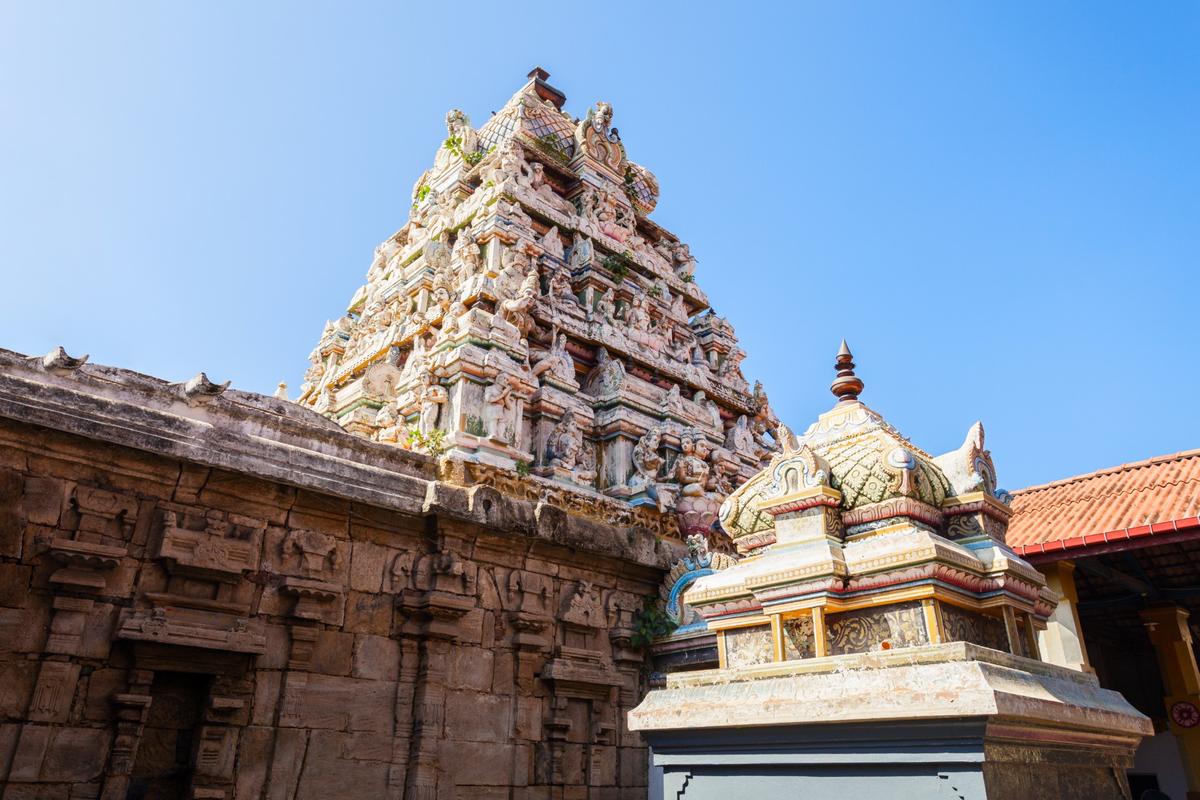
Munneswaram Temple is considered the oldest Hindu temple dedicated to Shiva in Sri Lanka
| Photo Credit:
Getty images
Though not as dramatic as Konamalai, Ketheeswaram is charming too. In recent years, the Indian government has helped in the restoration of this temple. A noteworthy feature is the inclusion, along the periphery, of various iconographic representations of Shiva.
The Tevaram and Tiruppugazh verses reinforce the long connection between the two countries in spiritual matters. The repeated resurrection of the shrines establishes the triumph of faith in the face of great adversity.
Published – October 22, 2025 05:19 pm IST
